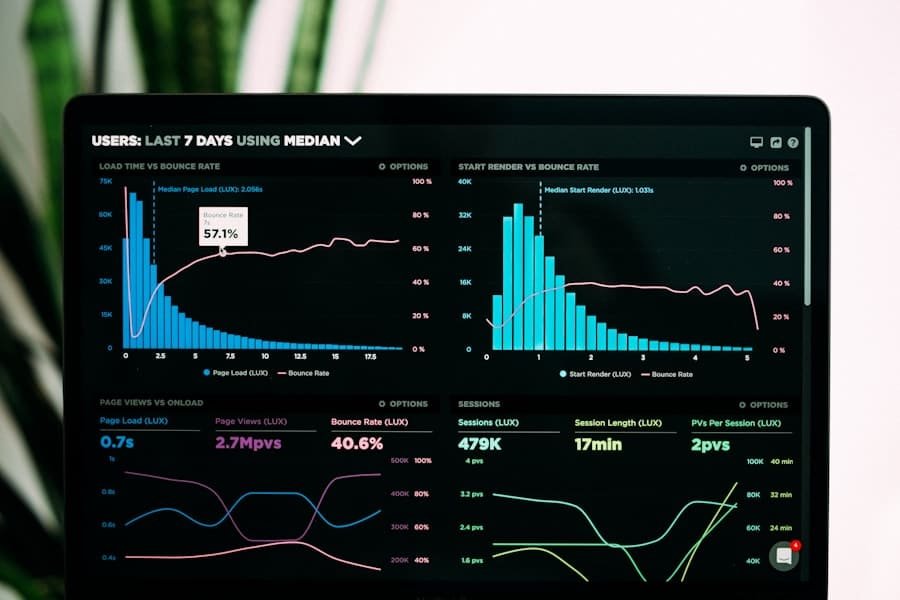Economic growth and poverty reduction are interrelated concepts that have been central to development discussions for many years. Economic growth is defined as the increase in a country’s production of goods and services over time, typically measured by the growth in its gross domestic product (GDP). Poverty reduction refers to the decrease in the number of people living below the poverty line, often measured by indicators such as income levels, access to basic services, and living standards.
The relationship between economic growth and poverty reduction is complex and multifaceted, influenced by various theoretical frameworks, empirical evidence, and contextual factors. Understanding this relationship is essential for policymakers and development practitioners aiming to create effective strategies for sustainable and inclusive development. From a theoretical standpoint, economic growth is often viewed as a means to achieve poverty reduction.
The underlying assumption is that as an economy expands, it generates more opportunities for employment, income generation, and access to essential services, which can help lift people out of poverty. This perspective is based on the concept of the trickle-down effect, where the benefits of growth are expected to eventually reach the poorest segments of society. However, this view has been challenged by alternative theories that emphasize the need for targeted interventions and redistributive policies to ensure that the benefits of growth are shared equitably and reach those most in need.
These theories stress the importance of addressing structural inequalities and barriers to access for marginalized groups to achieve meaningful poverty reduction alongside economic growth.
Key Takeaways
- Economic growth is essential for poverty reduction as it creates opportunities for income generation and improved living standards.
- Theoretical frameworks such as the Solow model and the Lewis model help in understanding the relationship between economic growth and poverty reduction.
- Empirical evidence suggests that sustained economic growth is associated with a reduction in poverty levels.
- Factors such as income inequality, access to education and healthcare, and employment opportunities influence the relationship between economic growth and poverty reduction.
- Policy implications include the need for pro-poor policies, investment in human capital, and promoting inclusive growth to effectively reduce poverty.
Theoretical Framework for Assessing the Relationship
Factors Influencing the Impact of Economic Growth on Poverty Reduction
The impact of economic growth on poverty reduction can vary significantly depending on factors such as the distribution of income, access to productive resources, and the nature of economic growth itself. For example, if economic growth is driven primarily by sectors that do not generate significant employment opportunities for the poor, its impact on poverty reduction may be limited. Similarly, if economic growth exacerbates existing inequalities or leads to environmental degradation that disproportionately affects the poor, its potential to reduce poverty may be undermined.
The Poverty Trap Hypothesis
Another important theoretical framework is the “poverty trap” hypothesis, which suggests that in some cases, poverty can act as a barrier to economic growth. According to this hypothesis, people living in poverty may lack access to education, healthcare, and other essential resources that would enable them to participate in and contribute to the economy. As a result, their potential for productive economic activity is constrained, leading to a cycle of poverty that hinders overall economic growth.
Breaking the Cycle of Poverty
This perspective highlights the need for targeted interventions to break the cycle of poverty and create opportunities for those living in poverty to participate in and benefit from economic growth. By addressing the underlying causes of poverty and providing access to essential resources, it is possible to create a more inclusive and equitable economy that benefits all members of society.
Empirical Evidence on the Relationship

Empirical evidence on the relationship between economic growth and poverty reduction has been a subject of extensive research and debate. While some studies have found a positive correlation between economic growth and poverty reduction, others have highlighted the limitations of relying solely on GDP growth as a measure of poverty reduction. For example, research has shown that in some cases, economic growth may lead to an increase in income inequality, which can undermine its potential to reduce poverty.
Similarly, studies have found that the benefits of economic growth do not always reach those most in need, particularly in countries with high levels of inequality and social exclusion. On the other hand, there is also evidence to suggest that targeted interventions and redistributive policies can enhance the poverty-reducing impact of economic growth. For example, research has shown that investments in education, healthcare, and social protection can help ensure that the benefits of economic growth are shared more equitably and reach those living in poverty.
Similarly, studies have highlighted the importance of inclusive economic policies that create opportunities for marginalized groups, such as women, youth, and ethnic minorities, to participate in and benefit from economic growth. This evidence underscores the importance of considering not only the rate of economic growth but also its quality and distribution in assessing its impact on poverty reduction.
Factors Influencing the Relationship
Several factors influence the relationship between economic growth and poverty reduction. One key factor is the nature of economic growth itself, including its sectoral composition, employment generation potential, and impact on income distribution. For example, if economic growth is driven primarily by capital-intensive industries that do not generate significant employment opportunities for the poor, its impact on poverty reduction may be limited.
Similarly, if economic growth leads to an increase in income inequality or environmental degradation, its potential to reduce poverty may be undermined. Another important factor is the presence of enabling conditions for poverty reduction, such as access to education, healthcare, and social protection. Research has shown that investments in human capital can enhance the poverty-reducing impact of economic growth by creating opportunities for people to participate in and benefit from economic activities.
Similarly, social protection programs can help mitigate the negative impacts of economic shocks and ensure that those living in poverty have access to essential resources. In addition, factors such as governance quality, political stability, and social inclusion play a crucial role in shaping the relationship between economic growth and poverty reduction. Countries with strong institutions and inclusive policies are more likely to harness the potential of economic growth for poverty reduction.
Policy Implications for Economic Growth and Poverty Reduction
The relationship between economic growth and poverty reduction has important policy implications for governments and development practitioners. One key implication is the need for inclusive economic policies that create opportunities for all segments of society to participate in and benefit from economic growth. This includes investments in education, healthcare, and social protection, as well as measures to address structural inequalities and barriers to access for marginalized groups.
In addition, policies aimed at promoting employment generation, small-scale entrepreneurship, and rural development can help ensure that the benefits of economic growth reach those most in need. Another important policy implication is the need for targeted interventions and redistributive policies to complement the poverty-reducing impact of economic growth. This includes measures such as cash transfers, food assistance programs, and targeted subsidies aimed at improving the living standards of those living in poverty.
In addition, efforts to strengthen social protection systems and improve access to essential services can help mitigate the negative impacts of economic shocks and ensure that those living in poverty have access to basic resources. Overall, effective policies for economic growth and poverty reduction require a comprehensive approach that addresses both the quantity and quality of growth, as well as the enabling conditions for poverty reduction.
Challenges and Limitations in Assessing the Relationship

Measuring Poverty: A Multidimensional Challenge
One key challenge is the complexity of measuring poverty itself, which goes beyond income levels to include access to basic services, living standards, and social inclusion. As a result, relying solely on income-based measures may not capture the full extent of poverty or its multidimensional nature.
Distributional Effects and Trade-Offs
Assessing the impact of economic growth on poverty reduction requires careful consideration of its distributional effects, including its impact on income inequality and social exclusion. Another challenge is the potential for trade-offs between economic growth and environmental sustainability in efforts to reduce poverty. While economic growth can create opportunities for income generation and access to essential resources, it can also lead to environmental degradation that disproportionately affects those living in poverty.
Striking a Balance: Sustainable Development and Environmental Conservation
Balancing these competing priorities requires careful consideration of sustainable development goals and environmental conservation efforts alongside efforts to promote economic growth and poverty reduction.
Conclusion and Future Directions for Research
In conclusion, the relationship between economic growth and poverty reduction is complex and multifaceted, with various theoretical frameworks, empirical evidence, influencing factors, policy implications, challenges, and limitations shaping our understanding of this relationship. While there is evidence to suggest that economic growth can contribute to poverty reduction under certain conditions, it is not a sufficient condition on its own. Targeted interventions and redistributive policies are necessary to ensure that the benefits of growth are shared equitably and reach those most in need.
Future research on this topic should continue to explore the nuanced relationship between economic growth and poverty reduction across different contexts and settings. This includes examining the role of inclusive economic policies, social protection systems, human capital investments, governance quality, political stability, environmental sustainability, and social inclusion in shaping this relationship. Additionally, research should continue to develop more comprehensive measures of poverty that capture its multidimensional nature beyond income levels alone.
Overall, advancing our understanding of this relationship is crucial for informing evidence-based policies and strategies for sustainable and inclusive development.
If you’re interested in learning more about the relationship between economic growth and poverty reduction, you may want to check out the article “The Impact of Economic Growth on Poverty Reduction” on The Econosphere’s website. This article delves into the various ways in which economic growth can lead to a reduction in poverty levels and provides valuable insights into this important topic. You can find the article here.
FAQs
What is the relationship between economic growth and poverty reduction?
Economic growth can lead to poverty reduction by creating more job opportunities, increasing income levels, and improving access to basic services such as healthcare and education. However, the extent to which economic growth reduces poverty depends on how the benefits are distributed among different segments of the population.
How does economic growth create job opportunities?
Economic growth can lead to an increase in demand for goods and services, which in turn creates a need for more workers. This can result in job creation across various sectors of the economy, providing employment opportunities for individuals and households.
What role does income level play in poverty reduction?
Higher levels of economic growth can lead to increased income levels for individuals and households, which can help lift people out of poverty. This can be achieved through higher wages, better job opportunities, and increased access to financial resources.
How does economic growth improve access to basic services?
Economic growth can lead to increased government revenue, which can be used to invest in infrastructure, healthcare, and education. This can result in improved access to basic services for the population, ultimately contributing to poverty reduction.
What are the limitations of relying solely on economic growth for poverty reduction?
While economic growth can contribute to poverty reduction, it is not always sufficient on its own. The benefits of economic growth may not reach all segments of the population equally, and certain groups may be left behind. Additionally, factors such as income inequality, access to resources, and social policies also play a significant role in poverty reduction.








